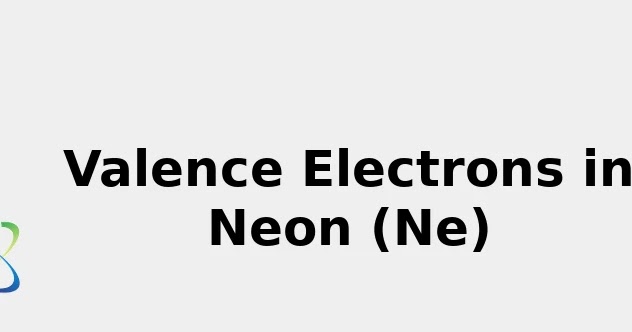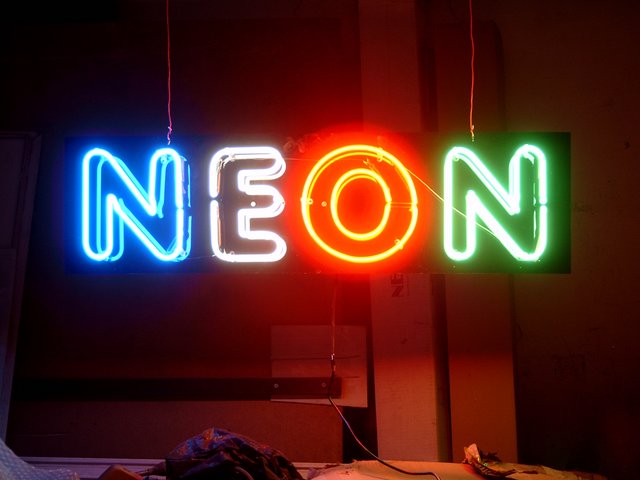Neon Atomic Number
The Element Neon
Name: Neon Symbol: Ne Atomic Number: 10 Atomic Mass: 20.1797 amu Melting Point:-248.6 °C (24.549994 K, -415.48 °F) Boiling Point:-246.1 °C (27.049994 K, -410.98 °F) Number of Protons/Electrons: 10 Number of Neutrons: 10 Classification: Noble Gas Crystal Structure: Cubic Density @ 293 K: 0.901 g/cm 3 Color: colorless Atomic Structure. Neon is a chemical element with atomic number 10 which means there are 10 protons and 10 electrons in the atomic structure. The chemical symbol for Neon is Ne. Atomic Mass of Neon Atomic mass of Neon is 20.1797 u. How to Write the Electron Configuration for Neon. Neon is the tenth element with a total of 10 electrons. In writing the electron configuration for neon the first two electrons will go in the 1s orbital. Since 1s can only hold two electrons the next 2 electrons for Ne go in the 2s orbital. The remaining six electrons will go in the 2p orbital.
[Click for Isotope Data]
Atomic Number: 10 Prey.
Fluorine, F, has an atomic number of 9 and an The Atomic number of Lithium is 3 and mass is 7 how Beryllium, Be, has an atomic number of 4 and an Fluorine, F, has an atomic number of 9 and an What is the total number of electrons in an atom of lithium has a atomic number of 3 and atomic mass of Neon has an atomic number of 10. Element Neon (Ne), Group 18, Atomic Number 10, p-block, Mass 20.180. Sources, facts, uses, scarcity (SRI), podcasts, alchemical symbols, videos and images.
Atomic Weight: 20.1797
Melting Point: 24.56 K (-248.59°C or -415.46°F)
Boiling Point: 27.07 K (-246.08°C or -410.94°F)
Density: 0.0008999 grams per cubic centimeter
Phase at Room Temperature: Gas
Element Classification: Non-metal
Period Number: 2
Group Number: 18
Group Name: Noble Gas
What's in a name? From the Greek word for new, neos.
Say what? Neon is pronounced as NEE-on.
History and Uses:
Neon was discovered by Sir William Ramsay, a Scottish chemist, and Morris M. Travers, an English chemist, shortly after their discovery of the element krypton in 1898. Like krypton, neon was discovered through the study of liquefied air. Although neon is the fourth most abundant element in the universe, only 0.0018% of the earth's atmosphere is neon.
The largest use for neon gas is in advertising signs. Neon is also used to make high voltage indicators and is combined with helium to make helium-neon lasers. Liquid neon is used as a cryogenic refrigerant. Neon is highly inert and forms no known compounds, although there is some evidence that it could form a compound with fluorine.
Estimated Crustal Abundance: 5×10-3 milligrams per kilogram
Estimated Oceanic Abundance: 1.2×10-4 milligrams per liter
Number of Stable Isotopes: 3 (View all isotope data)
Ionization Energy: 21.565 eV
Oxidation States: 0
Electron Shell Configuration: | 1s2 |
2s2 2p6 |
For questions about this page, please contact Steve Gagnon.
Atomic Number of Neon is 10.
Chemical symbol for Neon is Ne. Number of protons in Neon is 10. Atomic weight of Neon is 20.1797 u or g/mol. Melting point of Neon is -248,7 °C and its the boiling point is -246,1 °C.
Neon Atomic Number
» Boiling Point» Melting Point» Abundant» State at STP» Discovery YearAbout Neon
Neon Atomic Number And Atomic Mass
With the name which comes from a Greek word meaning new, neon is a noble gas that has ho odor and color, non-toxic and biologically not very important. In very small amounts, neon can be found in air, especially in northern parts of the atmosphere of our planet. It is extensively used for producing so called neon lights, primarily for decorative and advertising purposes. Neon is an element that is important for producing some types of lasers, electrical indicators, equipment for sports (especially water-sports), and so on. Neon turns bright red when charged with the electric current. Liquid neon is very good refrigerant widely used for preserving low temperatures in various kinds of industries.
What Is Neon Atomic Number
Uses of Neon
Neon (Ne), a chemical element and a tasteless, odorless, colorless inert gas of Group 18, is especially used for electric signs (neon signs), fluorescent lighting, high-voltage indicators, television tubes and wave meter tubes. Liquid neon is commonly used as a cryogenic refrigerant. Neon lamps (or glow lamps) are used as indicators, voltage testers, microwave and millimeter-wave detectors, and night-lights. They are also used as Nixie tubes which are electronic devices to display numerals or other info using glow discharge.
In addition, neon lighting is used by artists. There are some museums devoted to neon lighting such as the Neon Museum, the Museum of Neon Art, and the American Sign Museum. Artists who work with neon are Mary Weatherford, Glenn Ligon, Keith Sonnier, Iván Navarro, Tracey Emin, Shezad Dawood, etc.
Properties of Neon Element
| Atomic Number (Z) | 10 |
|---|---|
| Atomic Symbol | Ne |
| Group | 18 |
| Period | 2 |
| Atomic Weight | 20.1797 u |
| Density | 0.0008999 g/cm3 |
| Melting Point (K) | 24.56 K |
| Melting Point (℃) | -248,7 °C |
| Boiling Point (K) | 27.07 K |
| Boiling Point (℃) | -246,1 °C |
| Heat Capacity | 1.03 J/g · K |
| Abundance | 0.005 mg/kg |
| State at STP | Gas |
| Occurrence | Primordial |
| Description | Noble gas |
| Electronegativity (Pauling) χ | no data |
| Ionization Energy (eV) | 21.5646 |
| Atomic Radius | 38pm |
| Covalent Radius | 69pm |
| Van der Waals Radius | 154 |
| Valence Electrons | 8 |
| Year of Discovery | 1898 |
| Discoverer | Ramsay and Travers |
What is the Boiling Point of Neon?
Neon boiling point is -246,1 °C. Boiling point of Neon in Kelvin is 27.07 K.
What is the Melting Point of Neon?
Neon Atomic Number And Mass
Neon melting point is -248,7 °C. Melting point of Neon in Kelvin is 24.56 K.
How Abundant is Neon?
Abundant value of Neon is 0.005 mg/kg.
What is the State of Neon at Standard Temperature and Pressure (STP)?
State of Neon is Gas at standard temperature and pressure at 0℃ and one atmosphere pressure.
Neon Atomic Number Mass

Neon On The Periodic Table

When was Neon Discovered?
Neon was discovered in 1898.


